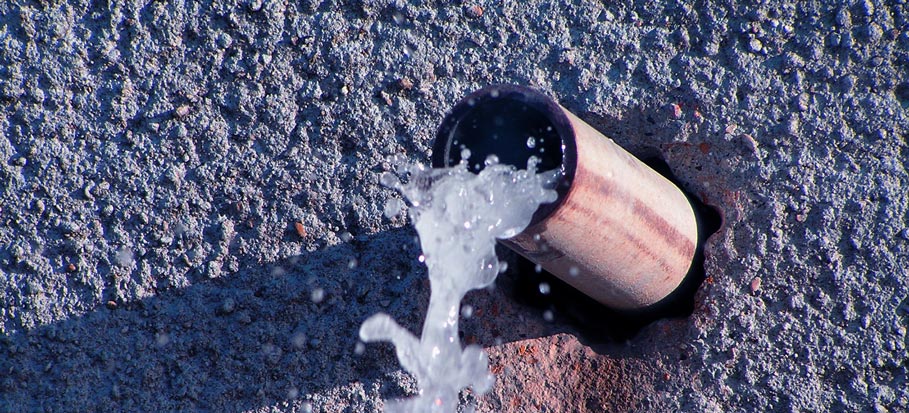6 Ways to Discover Concealed Water Leakages in Your Home
6 Ways to Discover Concealed Water Leakages in Your Home
Blog Article
We have uncovered the article about Finding hidden leaks down the page on the net and reckoned it made good sense to write about it with you on my blog.

Early detection of leaking water lines can mitigate a possible catastrophe. Some tiny water leakages may not be visible.
1. Examine the Water Meter
Checking it is a surefire way that aids you find leaks. If it relocates, that shows a fast-moving leak. This indicates you might have a slow-moving leak that might even be below ground.
2. Examine Water Usage
If you detect abrupt changes, regardless of your consumption being the exact same, it indicates that you have leaks in your plumbing system. An unexpected spike in your costs suggests a fast-moving leak.
A consistent rise every month, even with the very same habits, shows you have a sluggish leak that's likewise slowly rising. Call a plumber to extensively examine your residential or commercial property, especially if you really feel a warm location on your floor with piping below.
3. Do a Food Coloring Test
When it concerns water intake, 30% comes from commodes. Examination to see if they are running appropriately. Drop specks of food shade in the container and wait 10 mins. There's a leakage in between the container and bowl if the color somehow infiltrates your bowl during that time without flushing.
4. Asses Exterior Lines
Don't forget to inspect your outdoor water lines too. Test spigots by affixing a yard hose. Must water seep out of the connection, you have a loosened rubber gasket. Change this and also ensure all connections are tight. If you have actually obtained a sprinkler system, it will certainly help get it skillfully took a look at and kept every year. One little leak can squander lots of water and surge your water costs.
5. Evaluate as well as Evaluate the Scenario
Homeowners must make it a routine to check under the sink counters and also even inside cupboards for any bad odor or mold and mildew growth. These 2 warnings suggest a leakage so prompt interest is required. Doing routine examinations, even bi-annually, can save you from a major issue.
If you understand your house is currently old, maintain a watchful eye on your heating systems, hoses, pipelines and so on. Check for discolorations and deteriorating as many pipes and appliances have a life span. They will additionally normally deteriorate due to tear as well as put on. If you suspect leaking water lines in your plumbing system, do not wait on it to escalate. Call an expert plumber today so you do not end up with a dreadful mess in your home.
Early discovery of dripping water lines can alleviate a potential calamity. Some little water leakages might not be noticeable. Checking it is a guaranteed way that aids you find leaks. One small leakage can waste loads of water as well as surge your water costs.
If you suspect dripping water lines in your plumbing system, do not wait for it to escalate.
WARNING SIGNS OF WATER LEAKAGE BEHIND THE WALL
PERSISTENT MUSTY ODORS
As water slowly drips from a leaky pipe inside the wall, flooring and sheetrock stay damp and develop an odor similar to wet cardboard. It generates a musty smell that can help you find hidden leaks.
MOLD IN UNUSUAL AREAS
Mold usually grows in wet areas like kitchens, baths and laundry rooms. If you spot the stuff on walls or baseboards in other rooms of the house, it’s a good indicator of undetected water leaks.
STAINS THAT GROW
When mold thrives around a leaky pipe, it sometimes takes hold on the inside surface of the affected wall. A growing stain on otherwise clean sheetrock is often your sign of a hidden plumbing problem.
PEELING OR BUBBLING WALLPAPER / PAINT
This clue is easy to miss in rooms that don’t get much use. When you see wallpaper separating along seams or paint bubbling or flaking off the wall, blame sheetrock that stays wet because of an undetected leak.
BUCKLED CEILINGS AND STAINED FLOORS
If ceilings or floors in bathrooms, kitchens or laundry areas develop structural problems, don’t rule out constant damp inside the walls. Wet sheetrock can affect adjacent framing, flooring and ceilings.
https://www.servicemasterbyzaba.com/blog/how-to-detect-water-leakage-in-walls/

As a keen person who reads on Top leak detection hacks, I figured sharing that excerpt was beneficial. Liked our piece of writing? Please share it. Let another person locate it. I love reading our article about Locating water leaks.
Report this page